Introduction to Peonies
Peonies are extraordinary plants adored for their large, rich and beautifully shaped flowers as well as for sweet-scented aroma. These wonderful flowers have been grown for many years, enchanting everyone by their appearance and growing abilities.
Whether you are getting your hands dirty after many years of experience or going out into your yard making your first steps in gardening, growing peonies will enhance the sophistication of the landscape. This article will give all the relevant information one needs to know about growing these beautiful flowers, from planting, and how to take care of them.
Understanding Peonies
But in order to go deeper into the cultivation process, it is necessary to describe what peonies are and what types of flowers are included in this category.
What Are Peonies?
Peonies are herbaceous perennials or shrubs most of which possess large, showy flowers. The peonies plant has been grown for over three thousand years and it is native to Asia and Southern Europe. Presently, these are appreciated for their opulent flowers and quite mild demands to the growing conditions.
Types of Peonies
There are three main types of peonies:
- Herbaceous Peonies: These are the most common type, which wither off from the ground at the end of the winter only to start growing again in the spring.
- Tree Peonies: Deciduous trees in other words plants that shed off their leaves especially when the climatic conditions are adverse such as during the winter period but retain other parts of the plant above the ground.
- Intersectional (Itoh) Peonies: Derived from the cross between herbaceous and tree peonies, obtained staking off the qualities of both the parents.
There are different types of peonies flower and each of them is special in the manner it blooms and the conditions under which it is grown and these are clear from this guide.
A peonies plantation requires special attention with regard to its location and this article will provide a guide for choosing the right site.
Planting location is very important to the success of the growth of the peonies and also the best spot for their blooms.
Sunlight Requirements
Climbing plants such as Peonies plants require full sunlight to at least partial shade for them to be healthy. For optimal growth and flowering:For optimal growth and flowering:
- Get exposed to direct sunlight for a period that varies from 6- 8 hrs.
- In warmer regions provide some shade in the afternoon for the protection of the flowers.
- Proper air flow should be maintained so as to control fungal diseases.
Soil Conditions
The proper soil conditions are crucial for wholesome peonies:
- Well-draining, fertile soil is good
- Slightly acidic to unbiased pH (6.Five-7.Zero) is desired
- Avoid heavy clay or overly sandy soils
- Improve soil form with natural don’t forget if wanted
Climate Considerations
Peonies are hardy plants, however they do have a few weather possibilities:
- Most sorts thrive in USDA hardiness zones 3-eight
- They require a period of wintry weather dormancy (sit down decrease lower back hours)
- In warmer climates (zones 8-nine), select early-blooming sorts
Planting Peonies
Now that you’ve decided on the right place, it is time to plant your peonies.
When to Plant
The terrific time to plant peonies is based upon on whether or not or now not you are using naked-root or container-grown flowers:
- Bare-root peonies: Plant in fall, 6-eight weeks in advance than the floor freezes
- Container-grown peonies plants: Can be planted in spring or fall
How to Plant
Follow those steps for a achievement peonies plants planting:
- Prepare the soil through digging a hollow two times as huge and deep as the foundation ball.
- Mix in compost or well-rotted manure to enhance soil fertility.
- Place the peonies plants in order that the eyes (growth buds) aren’t any extra than 2 inches under the soil floor.
- Backfill with soil, firming gently to get rid of air pockets.
- Water thoroughly after planting.
Spacing
Proper spacing is vital for air float and future boom:
- Herbaceous peonies plants: Space three-four feet aside
- Tree peonies plants: Space four-5 toes apart
- Intersectional peonies plants: Space 3-four feet aside
Caring for Your peonies plants
Once your peonies plants are planted, proper care will make certain healthy booms and great blooms.
Watering
peonies plants have moderate water desires:
- Water deeply as quickly as each week, presenting approximately 1 inch of water
- Increase watering in the course of dry spells or in hotter climates
- Avoid overwatering, as this could purpose root rot
Fertilizing
peonies plants gain from regular fertilization:
- Apply a balanced, low-nitrogen fertilizer in early spring
- Side-dress with compost or nicely-rotted manure in overdue spring
- Avoid over-fertilizing, as this will cause inclined stems and less blooms
Mulching
Mulch enables maintain moisture and suppress weeds:
- Apply a 2-three inch layer of natural mulch across the base of the plant
- Keep mulch away from the crown to prevent rot
- Replenish mulch yearly in spring
Pruning
Proper pruning permits keep plant health and appearance:
- Herbaceous peonies plants: Cut once more to ground degree in overdue fall after the primary frost
- Tree peonies plants: Remove dead or damaged timber in early spring
- Intersectional peonies plants: Cut lower back herbaceous growth in fall, leaving woody stems intact
Supporting peonies plants
Many peonies plants, particularly humans with huge blooms, advantage from help:
- Install peony rings or stakes in early spring in advance than increase begins off evolved
- Gently guide stems via the assist as they boom
- Remove supports after flowering and keep for next season
Common Peony Problems and How to Solve Them
Though peonies plants are extraordinarily low-preservation, they’ll be capable of occasionally stumbling upon some troubles. Here are some common problems and a way to deal with them:
1. Botrytis Blight (Gray Mold)
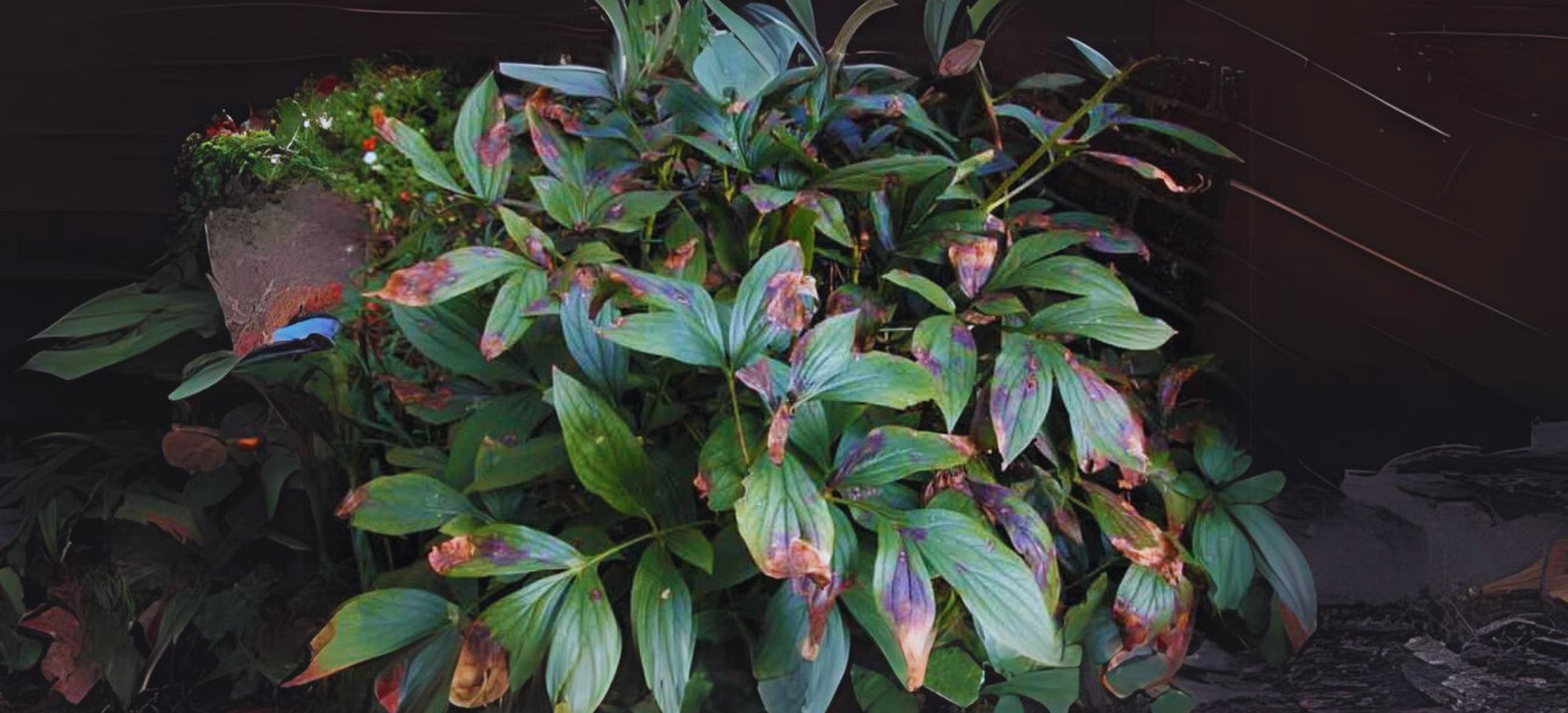
Botrytis blight, normally called gray mold, is one of the most commonplace ailments that affect peonies plants, especially in moist and humid situations. It is due to a fungus referred to as Botrytis paeoniae, which prospers in cool, damp environments. This infection can motive numerous signs and symptoms, which includes:
- Bud rot: Flower buds also can moreover turn brown or black and fail to open.
- Stem blight: Brown or black spots seem at the stems, and in severe instances, the stem also can wilt and fall apart.
- Leaf spots: Brownish-gray spots can also shape on the leaves, specifically in some unspecified time in the future of periods of extended wetness.
Solution:
- Improve air float: Space your peony vegetation at least three-4 ft apart to allow for top airflow. Overcrowded plant life creates a moist microclimate, which promotes fungal increase.
- Remove affected factors: As speedy as you look at signs and symptoms of botrytis blight, lessen off and break the affected buds, stems, and leaves. Do not compost the ones clippings, as they are able to harbor fungal spores.
- Mulch cautiously: Avoid piling mulch at once throughout the bottom of the plant, as this could lure moisture. Instead, keep the mulch layer mild and ensure it is not too near the plant’s crown.
- Fungicide treatment: If the infection is excessive, practice a fungicide labeled for botrytis control. Use a fungicide in early spring at the same time as the shoots first emerge, and hold to apply it consistent with the product’s instructions within the path of periods of moist climate.
- Clean up particles: In the fall, clean away any plant particles spherical your peony flora. Fungal spores can overwinter in useless leaves and stems, most vital to reinfection in the spring.
2. Powdery Mildew
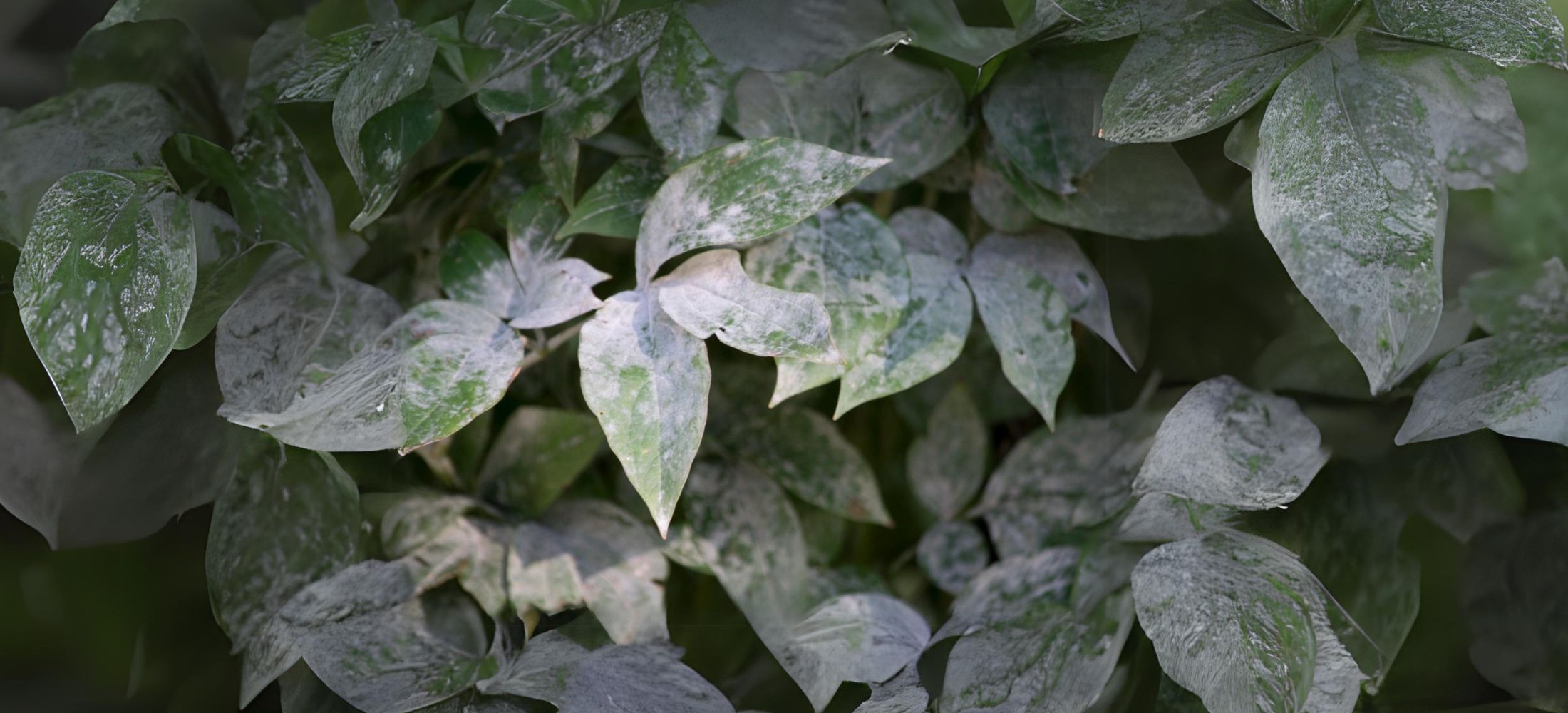
Powdery mildew is some other fungal sickness that would have an impact on peonies plants, although it’s always extra not unusual in warm temperature, dry climates. It seems as a white or gray powdery coating at the leaves, stems, or maybe buds. Although it does not often motivate excessive damage to the plant, it can lessen the plant’s usual vigor and feature an effect on its look.
Solution:
- Water at the lowest: Water your peonies plants at the bottom in preference to overhead. Wet leaves can inspire the spread of powdery mildew.
- Ensure particular air movement: Similar to botrytis blight, powdery mildew flourishes in humid, poorly ventilated conditions. Prune surrounding vegetation and make certain peonies plants spaced efficiently to boom airflow.
- Use fungicides: If the mildew is huge, you can observe fungicides alongside sulfur-based absolutely sprays, which is probably powerful at controlling powdery mildew. Organic treatments, like neem oil or a solution of baking soda combined with water, also can be powerful.
- Remove infected foliage: At the surrender of the developing season, lessen over again and do away with any foliage that shows signs and symptoms and symptoms and signs and symptoms of mold. This lets in reduce the kind of fungal spores that would overwinter and have an effect on new growth within the spring.
3. Ants on Peony Buds
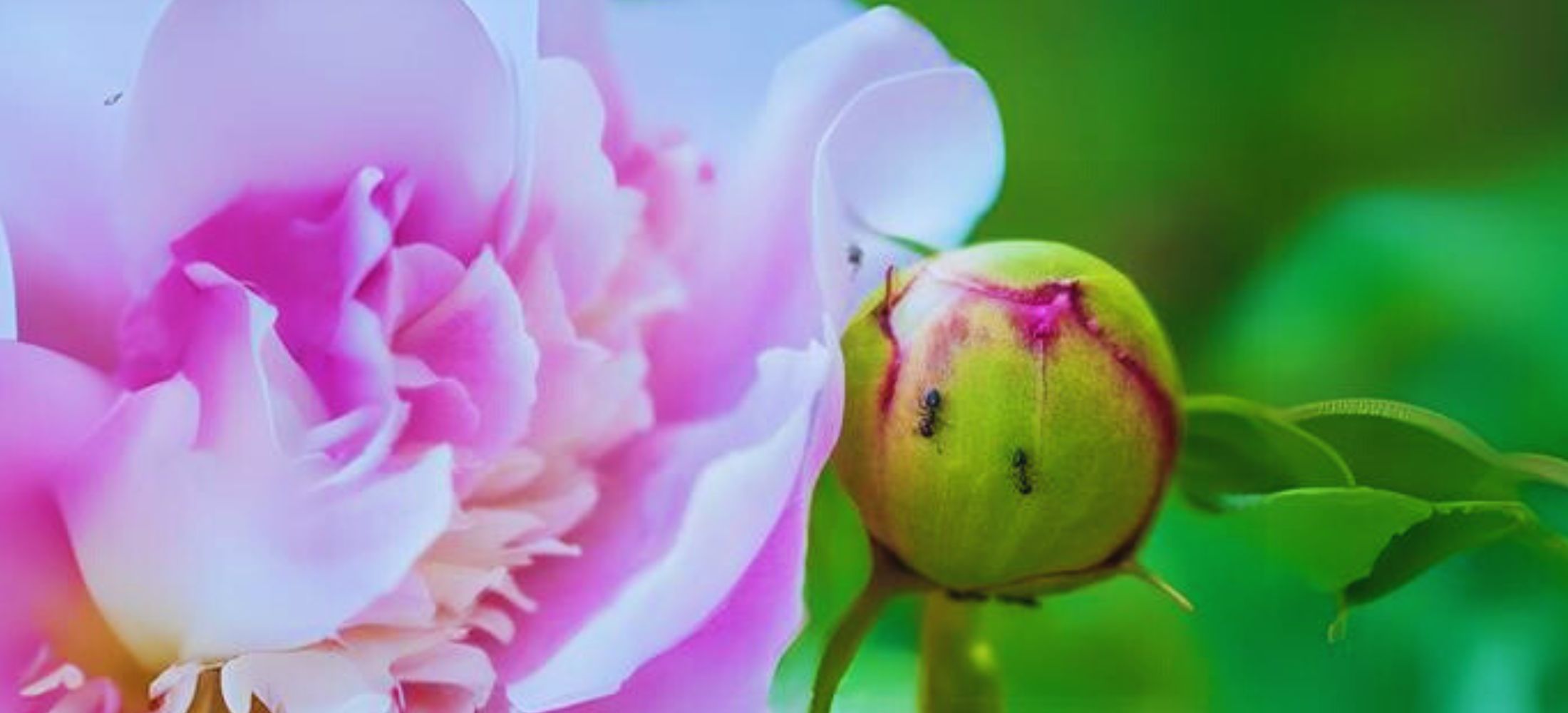
Many gardeners word ants crawling on peony buds honestly earlier than they bloom. These ants are interested in the candy nectar produced with the aid of the buds, and at the same time as their presence can be alarming, they do not now harm the plant.
Solution:
- Let them be: Ants aren’t risky to peonies plants and in reality assist protect the plant through ways of averting other more destructive bugs. They will certainly disappear as soon as the blooms open.
- Rinse off ants: If you advocate to lessen peonies plant for indoor preparations, gently rinse the buds and vegetation with water to get rid of the ants in advance rather than bringing them indoors.
- Avoid chemical treatments: Since ants don’t damage the peony plant, there can be no want to use pesticides. Chemical treatments should kill useful insects and dissatisfied the herbal balance to your lawn.
4. Peony Leaf Spot (Cladosporium or Phyllosticta)
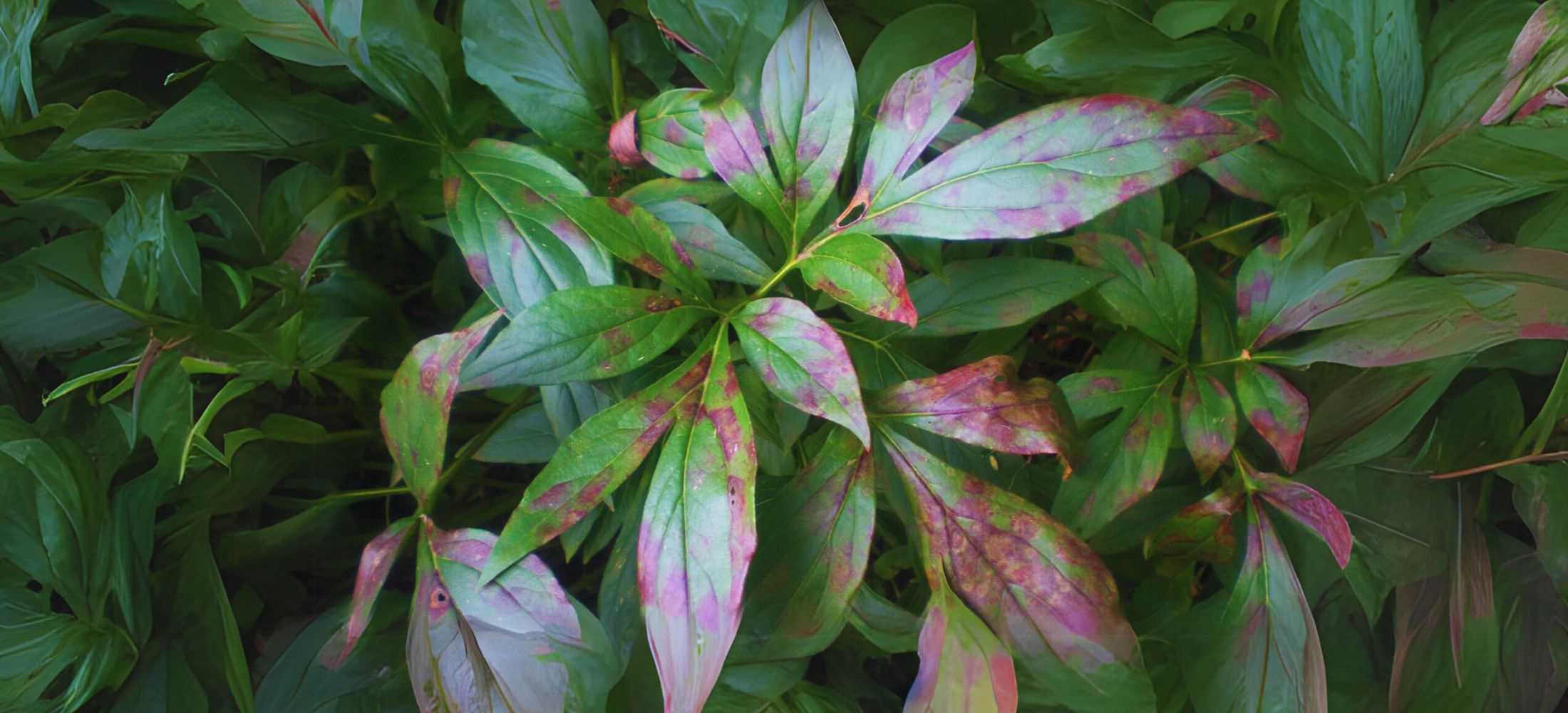
Peony leaf spot is due to fungal pathogens, most commonly Cladosporium paeoniae and Phyllosticta paeoniae. It manifests as small, crimson, or brown spots at the leaves, frequently starting at the bottom of the plant and shifting upward. If left untreated, the spots can unfold, inflicting the leaves to expose yellow and fall off in advance.
Solution:
- Good sanitation practices: Remove and harm inflamed leaves as quickly as you notice them. Keeping the vicinity round your plant life freed from debris and fallen leaves allows restricting the hazard of reinfection.
- Fungicide software program: Use a fungicide to treat peony leaf spot if the problem persists. Apply fungicides early in the developing season to prevent the sickness from spreading.
- Watering method: Water peonies flowers plants at floor degree to keep away from wetting the foliage, as moisture on the leaves can encourage fungal boom.
- Adequate spacing: Maintain right spacing among plants to beautify air waft and reduce humidity stages throughout the foliage.
5. Peony Wilt (Phytophthora Blight)
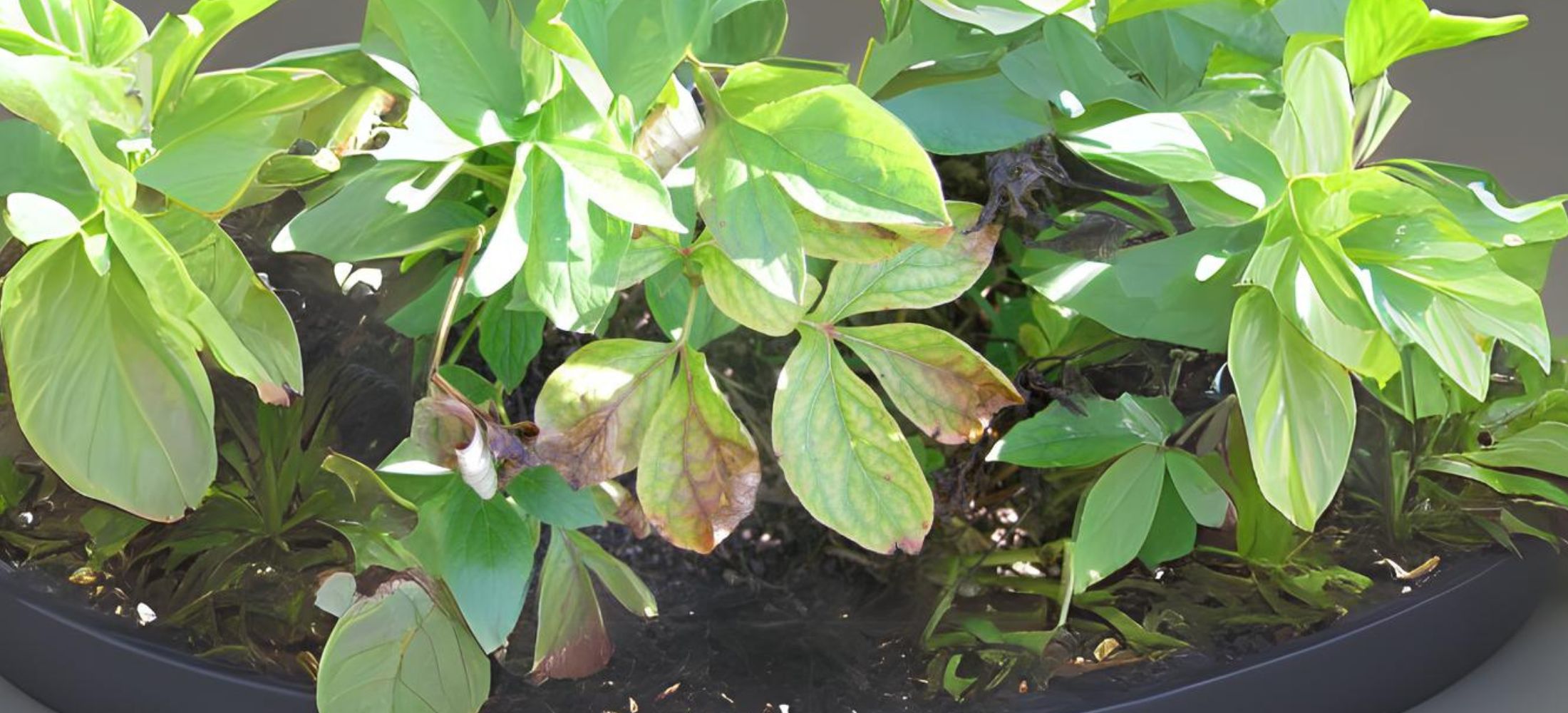
Peony wilt, or Phytophthora blight, is an intense disorder due to a soil-borne fungus. It regularly begins inside the spring, causing blackened, wilted shoots that could appear to be burned via frost. The stems will fall apart, and if the sickness progresses, it may rot the roots, killing the plant.
Solution:
- Remove inflamed factors right now: At the number one signal of wilting, lessen off the affected factors well under the broken vicinity and eliminate them. This can help prevent the fungus from spreading.
- Improve drainage: Phytophthora thrives in soggy, poorly worn-out soil. Ensure your peonies flower plants are planted in nicely-draining soil and keep away from overwatering.
- Mulch cautiously: Keep mulch some distance from the plant’s base to reduce the chances of soil-borne pathogens splashing onto the stems.
- Fungicides: In excessive instances, a fungicide treatment may be important, although improving cultural practices is the fine prevention method.
6. Failure to Bloom

Peonies flowers are stated for his or her extraordinary blooms, so after they fail to flower, it is able to be disappointing. The reasons for non-blooming peonies flowers can range, however not unusual causes embody planting intensity, loss of daytime, immaturity, or immoderate nitrogen fertilizer.
Solution:
- Planting intensity: One of the maximum not unusual reasons peonies flowers plants flora don’t bloom is being planted too deep. The “eyes” of the muse (the small buds at the rootstock) need to be no more than 1-2 inches beneath the soil ground. If they’re too deep, the plant may also moreover produce foliage however no longer flora.
- Sunlight: peonies flowers plants plants want as a minimum 6 hours of whole sunlight hours each day to bloom well. If your peony is in too much coloration, bear in mind transplanting it to a sunnier spot in the garden.
- Age of plant: peonies flowers can also moreover take 2-three years to come to be mounted earlier than they start blooming regularly. Be affected by younger vegetation.
- Fertilization: Avoid applying too much nitrogen fertilizer, that can inspire lush foliage growth on the rate of vegetation. Use a balanced fertilizer or one barely better in phosphorus to sell blooming.
7. Root Rot
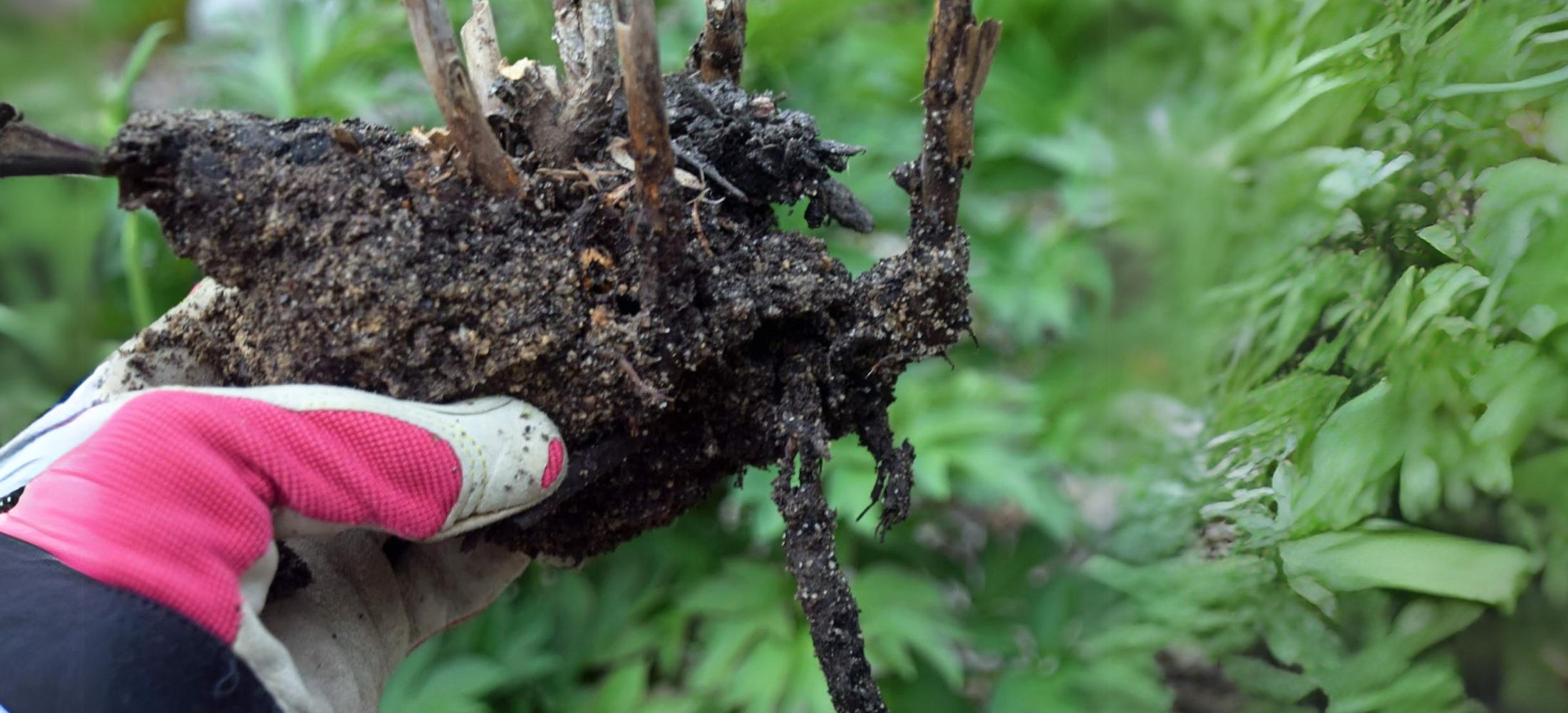
Root rot is a few exclusive troubles that might have an effect on peonies flower plants, especially in poorly worn-out soils. It is due to various fungi and microorganisms in waterlogged conditions. Symptoms of root rot encompass yellowing leaves, stunted growth, and sooner or later the death of the plant if the roots are seriously damaged.
Solution:
- Ensure right drainage: The maximum critical step in stopping root rot is to plant peonies flowers plants in well-worn-out soil. If your soil keeps an excessive amount of moisture, take into account amending it with sand or compost to enhance drainage.
- Watering: Avoid overwatering your peonies’ flowers, in particular if you word symptoms and signs and symptoms and signs of terrible drainage. peonies flowers plants vegetation select to dry out slightly between watering.
- Transplanting: If a plant indicates early signs and symptoms and symptoms of root rot, cautiously dig it up, trim away any affected roots, and transplant it to a region with better drainage.
8. Leaf Burn (Scorch)
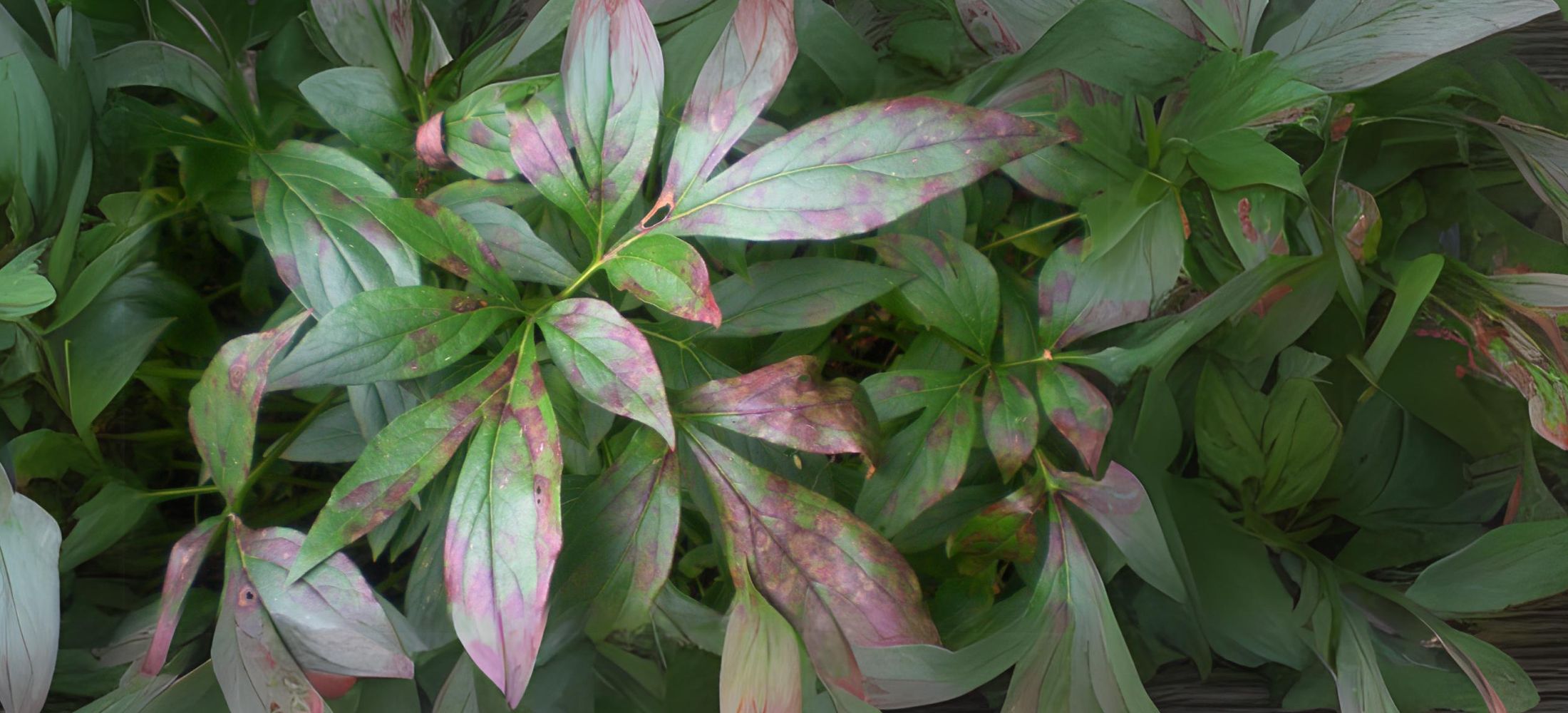
Leaf burn or leaf scorch can arise at the same time as peonies flower plants are uncovered to excessive warmness, robust daytime, or drought situations. It manifests as browning or crisping of the leaf edges and may lessen the plant’s power over time.
Solution:
- Water constantly: Water your peonies flowers plants vegetation regularly, particularly all through heat and dry climate, to ensure they get keep of adequate moisture.
- Mulch: Apply a layer of mulch around the base of the plant to help preserve moisture and preserve the roots cool.
- Provide shade: In mainly heat climates, recall planting peonies flowers plants plant life in an area wherein they acquire a few afternoon colors to guard them from the harshest daylight hours.
Propagating peonies flowers plants
Expanding your peonies flower collection via propagation can be worthwhile. Here are common strategies:
Division
Best for herbaceous and intersectional peonies flowers plants:
- Divide in fall after foliage has died returned
- Carefully dig up the entire plant
- Wash off soil to show roots and eyes
- Cut roots into sections, ensuring each has 3-five eyes and lots of roots
- Replant divisions proper away
Grafting
Primarily used for tree peonies flowers plants:
- Take a scion (more younger stem) from the favored tree peony in overdue summer time
- Graft onto a herbaceous peony rootstock
- Provide right care and safety until the graft takes
Enjoying Your peonies flowers plants Flowers
The praise to your difficult art work is the cute display of peonies flowers plants vegetation. Here’s a way to make the maximum of your blooms:
Cutting for Arrangements
peonies flowers plants make wonderful lessen flora:
- Cut on the equal time as buds are although tight but displaying coloration
- Cut stems at an attitude and put off decrease leaves
- Place in cool water and maintain in a groovy vicinity until buds start to open
- Change water every few days to lengthen vase life
Photographing peonies flowers plants
Capture the beauty of your peonies flowers plants:
- Photograph in early morning or overdue afternoon for outstanding mild
- Use a macro lens or near-up smooth out for particular photos
- Experiment with excellent angles and compositions
Preserving peonies flowers plants
Extend the beauty of your peonies flowers plants beyond their blooming season:
- Press person petals or entire vegetation for dried preparations
- Use silica gel to dry complete blooms for lengthy-lasting decorations
peonies flowers plants in Garden Design
Incorporate peonies flowers plants into your landscape for max impact:
Companion Planting
Pair peonies flowers plants with complementary flora:
- Spring-flowering bulbs like tulips and daffodils
- Late-blooming perennials to boom the lawn’s season
- Ornamental grasses for texture assessment
Landscape Uses
Versatile peonies flowers may be applied in various lawn settings:
- As focal factors in combined borders
- In formal lawn designs
- As foundation plantings
- In cottage lawn patterns
- As specimen plants in boxes (specially tree peonies flowers)
Conclusion
Growing peonies flowers are rewarding experience that brings splendor and fragrance to your lawn 12 months after 12 months. With the right care and interest, these beautiful perennials will thrive and provide a remarkable display of blooms every spring. Whether you’re cultivating herbaceous, tree, or intersectional peonies, the key to achievement lies in information about their wishes and presenting the proper developing conditions.
Remember that patience is vital while growing plants. It may additionally take some years for newly planted peonies to establish and bring an abundance of flowers, but the wait is nicely well worth it. As you come to be extra skilled with developing plants, you’ll find out the pleasure of experimenting with extraordinary types, colors, and paperwork, growing a numerous and fascinating peony collection for your garden.
Read more: Yucca plants: Grow your own Drought-Tolerant Beauty

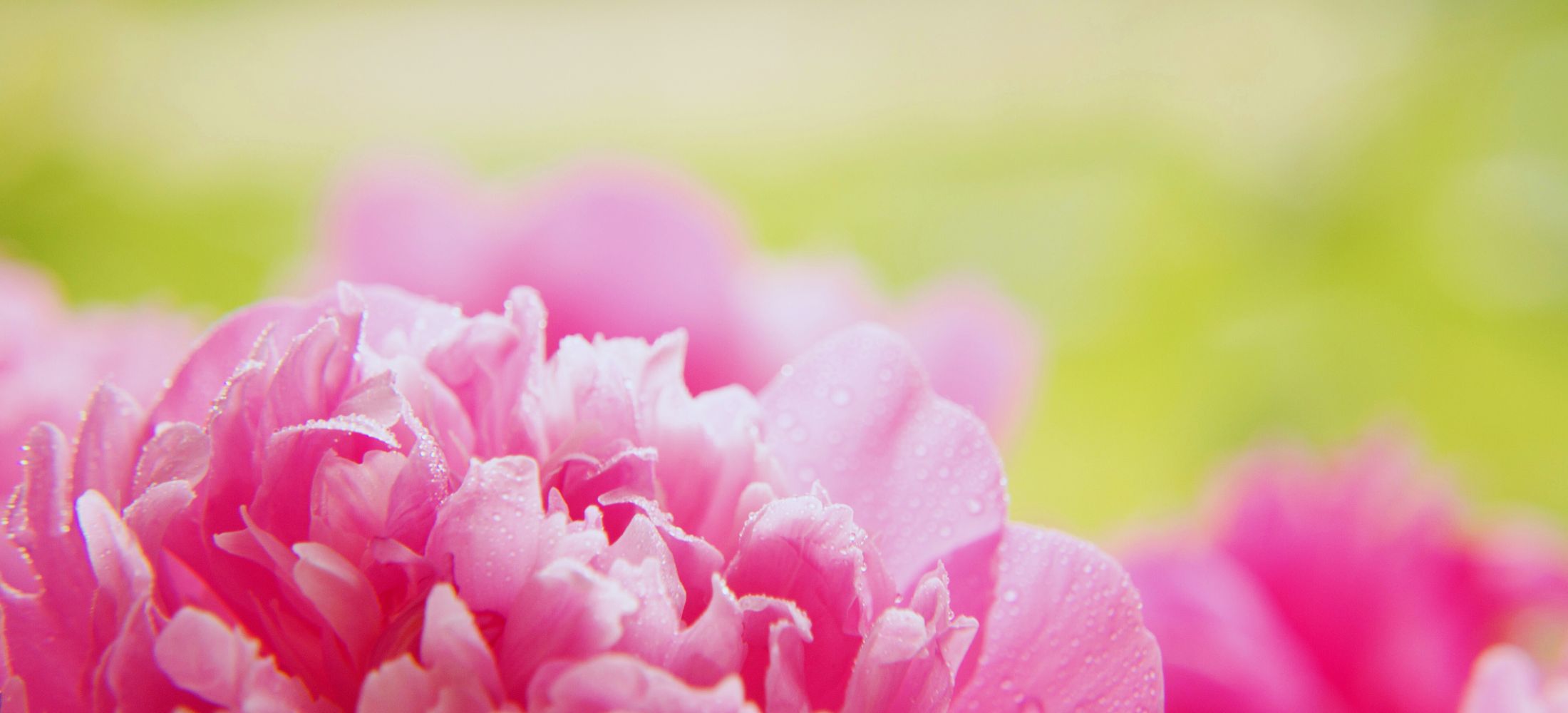








4 thoughts on “How to successfully Grow Peonies: A Comprehensive Guide”